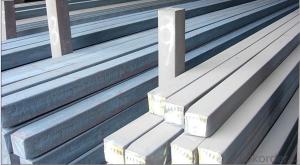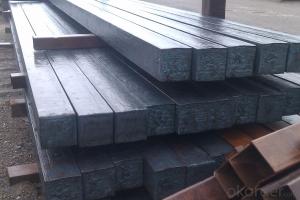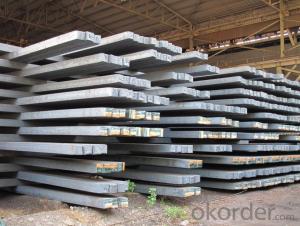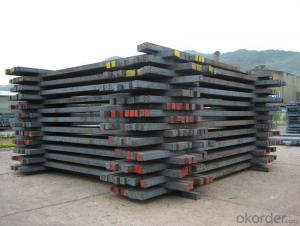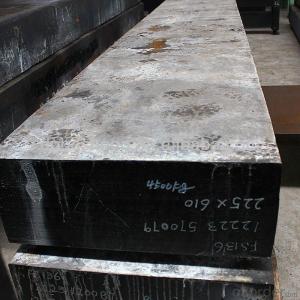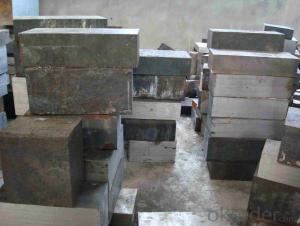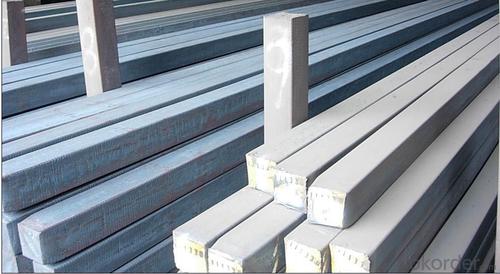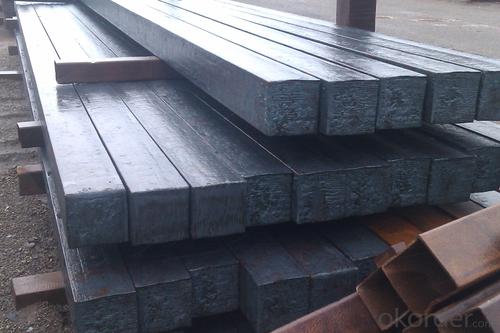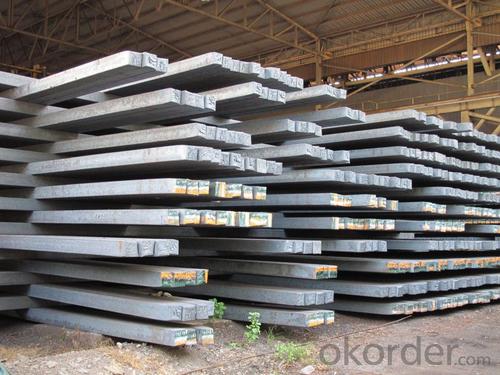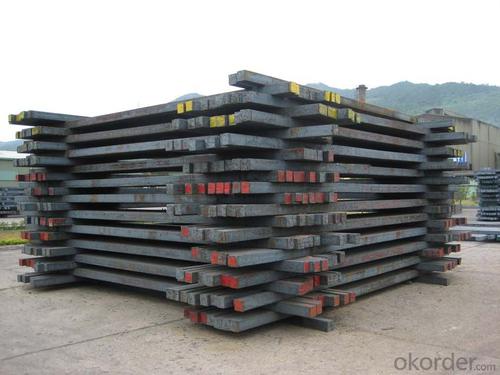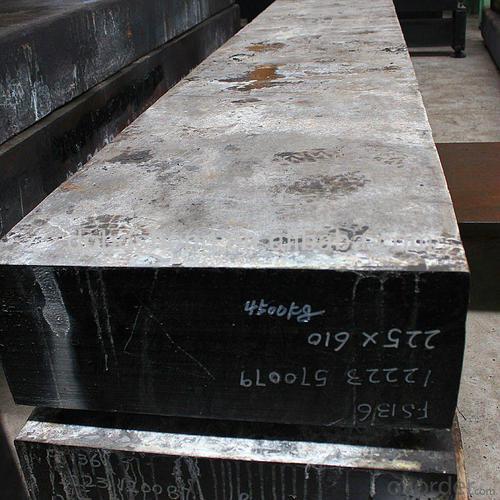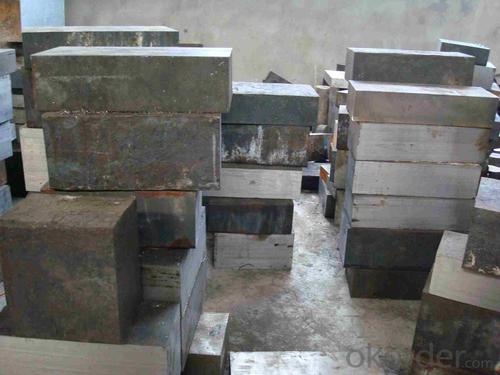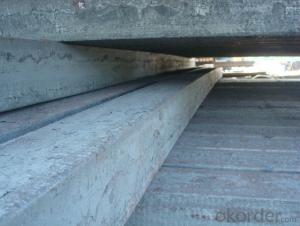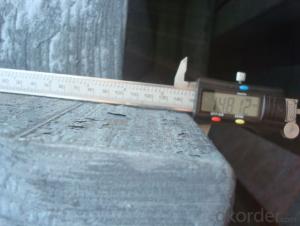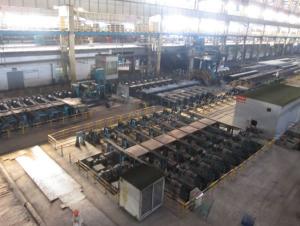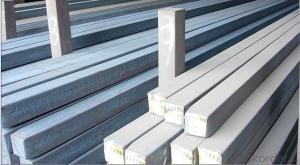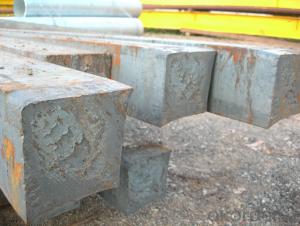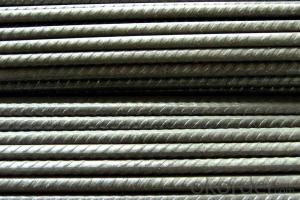Prime quality square alloy steel billet 130mm Q235
- Loading Port:
- Tianjin
- Payment Terms:
- TT OR LC
- Min Order Qty:
- 100 m.t.
- Supply Capability:
- 10000 m.t./month
OKorder Service Pledge
OKorder Financial Service
You Might Also Like
Structure of Prime quality square alloy steel billet 130mm Q235
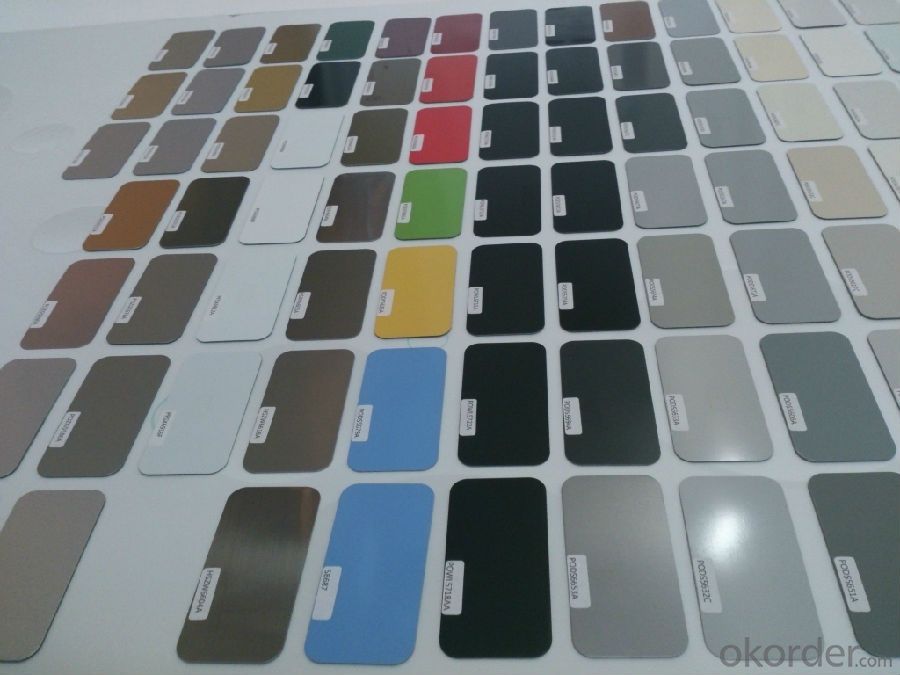
Description of Prime quality square alloy steel billet 130mm Q235
1. Prepainted steel coil is coated with organic layer, which provides higher anti-corrosion property and a longer lifespan than that of galvanized or galvalume steel sheets.
2. The base metals for prepainted steel coil consist of cold rolled, HDGI Steel, electro-galvanized and hot-dip alu-zinc coated steel. The finish coats of prepainted steel coil can be classified into groups as follows: polyester, silicon modified polyesters, polyvinylidene fluoride, high-durability polyester, etc.
3. The production process has evolved from one-coating-and-one-baking to double-coating-and-double-baking, and even three-coating-and-three-baking.
4. The color of the prepainted steel coil has a very wide selection, like orange, cream-colored, dark sky blue, sea blue, bright red, brick red, ivory white, porcelain blue, etc.
5. The prepainted steel coils can also be classified into groups by their surface textures, namely regular prepainted sheets, embossed sheets and printed sheets.
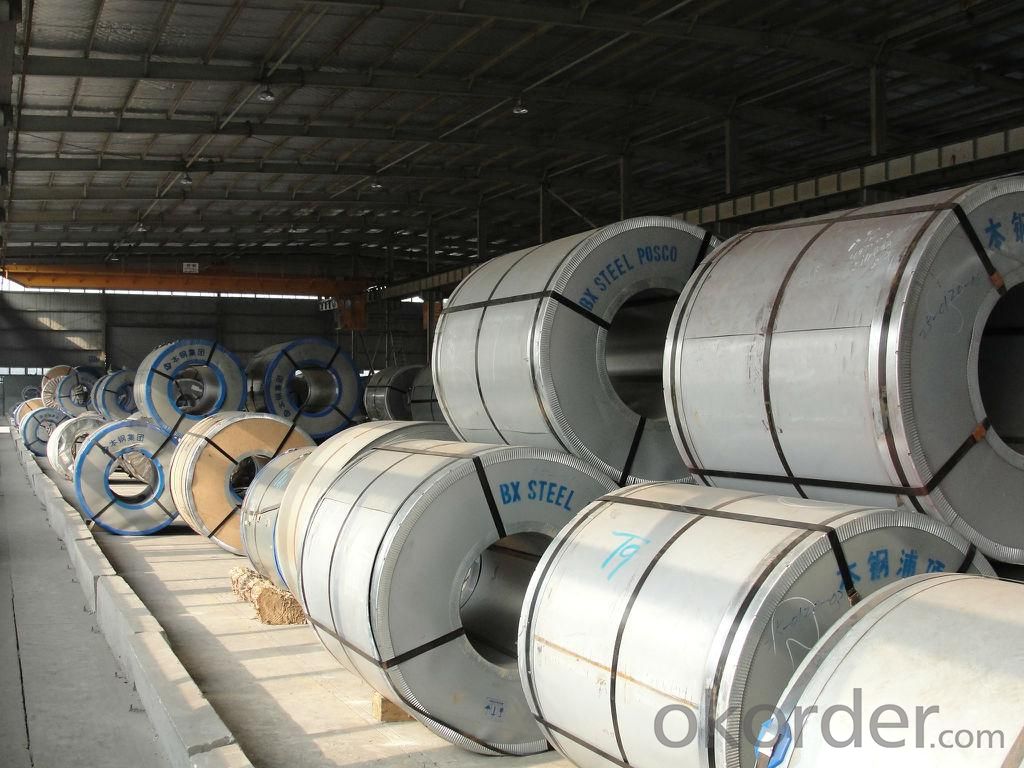
Main Feature of Prime quality square alloy steel billet 130mm Q235
Uncoated CR steel sheet
With the features of in line with the international highest standards in demension and shape, excellent surface finish and properties, the products are mainly used in home appliance and automobile industries.
Galvanized steel sheet(include HDG and EG)
With the features of good corrosion resistance, the products are mainly used in automobile, home appliance, electronics, building and machinery manufacture industries, etc.
Precoated steel sheet
With the features of enviromental protection and good processablility, long lasting surface durability, rich in colors, the products are maily used in building, home appliance and furniture industries, etc.
Applications of Prime quality square alloy steel billet 130mm Q235
Construction
Manufacture anticorrosion, industrial and civil architecture roof boarding, roof grille
Light industries
Home appliance's case, civil chimney, kitchen utensils
Auto industry
Corrosion resistant parts of cars
Agriculture
Food storage, meat and aquatic products' freezing and processing equipment
Commerce
Equipments to store and transport materials, and packing implements
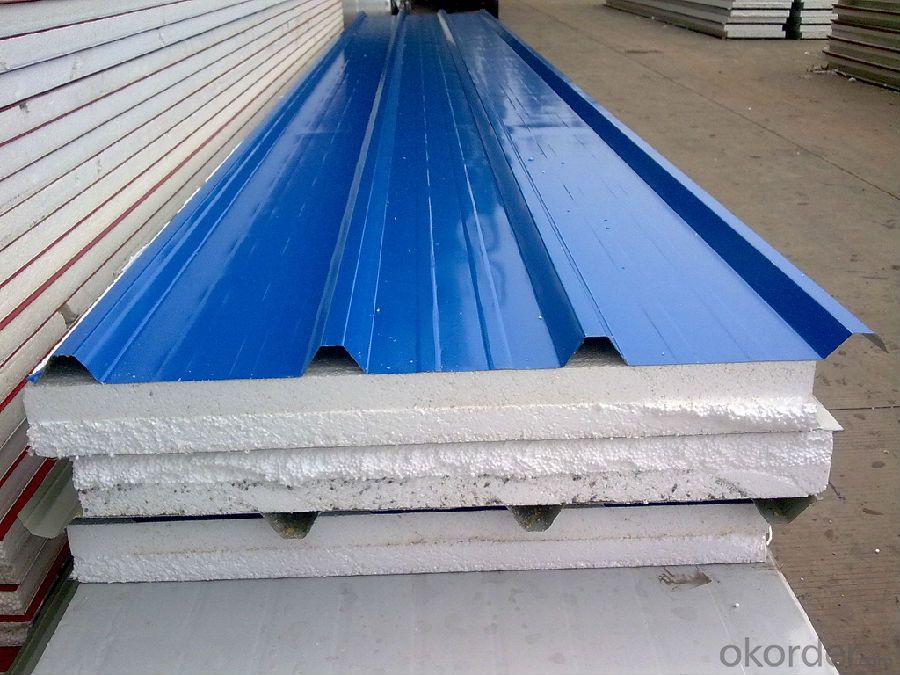
Specifications of Prime quality square alloy steel billet 130mm Q235
Product | Prime quality square alloy steel billet 130mm Q235 |
Material Grade | SGCC / SGCH / DX51D+AZ, etc |
Thickness | 0.6-3.0mm |
Width | 500-1500mm |
Tolerance | Thickness: +/-0.02mm , Width:+/-2mm |
Zinc-coating | Z30-150g/m2 |
Technique | Raw material: Hot rolled steel coil --> Cold rolled_>hot dipped galvalume |
Surface | Dried, Chromated, Unoiled |
Spangle | Regular spangle , small spangle, zero spangle |
ID | 508MM 610MM |
Coil weight | 1-25MT |
Export package | Cardboard inner sleeves, Waterproof paper, galvanized steel covered and steel strip packed |
FAQ of Prime quality square alloy steel billet 130mm Q235
We have organized several common questions for our clients,may help you sincerely:
1. How Can I Visit There?
Our company is located in Tianjin City, China, near Beijing. You can fly to Tianjin Airport Directly. All our clients, from home or aboard, are warmly welcome to visit us!
2. How Can I Get Some Sample?
We are honored to offer you sample.
3. Why choose CNBM?
Our delivery time about 15-20days for standard sizes, if you have other requirements like hardness, quanity and width ,it is about 20-40days. But don't worry we also try our best for the delivery time ,because time longer and our cost is higher.
- Q: How do steel billets contribute to the manufacturing of automotive parts?
- The manufacturing of automotive parts heavily relies on steel billets, as they serve as the primary raw material for various components. Steel billets possess excellent strength, durability, and malleability properties, making them indispensable for automotive manufacturers. To begin with, steel billets play a crucial role in the production of engine parts such as crankshafts, connecting rods, and camshafts. These components demand high strength and precision, which can be achieved by utilizing steel billets as the initial material. By heating, forging, and machining the billets, they are shaped into the desired form, ensuring the necessary strength and accuracy for optimal engine performance. Furthermore, suspension and chassis components also heavily rely on steel billets. Control arms, axles, and frame sections necessitate exceptional toughness and resistance to endure the constant stresses and strains experienced by vehicles. Steel billets provide the required mechanical properties to guarantee the safety and longevity of these vital automotive components. In addition, various transmission and drivetrain parts are manufactured using steel billets. Gears, shafts, and differential components require outstanding wear resistance, strength, and dimensional accuracy to ensure the efficiency and reliability of the vehicle's power transmission system. Through forging and machining, steel billets are transformed into these parts, meeting the rigorous standards set by the automotive industry. Moreover, steel billets contribute to the production of body and exterior components such as doors, hoods, fenders, and frames. These parts necessitate high strength, corrosion resistance, and the ability to be shaped into complex forms. Steel billets can be hot or cold rolled, pressed, stamped, or welded to produce these components, providing the necessary structural integrity and aesthetics for automotive bodies. In conclusion, the superior mechanical properties and versatility of steel billets make them vital in the manufacturing of automotive parts. They enable the production of high-quality, durable, and reliable components that meet the demanding requirements of the automotive industry. The use of steel billets ensures the safety, performance, and longevity of vehicles, contributing to the overall quality of the automotive manufacturing process.
- Q: Billet heating furnace billet temperature reached, steel will be adhesion
- There are a lot of billet heating furnace manufacturers, not just look at the price and go blind choice, billet heating furnace selection properly, will directly affect the day after work is carried out properly, choose cost-effective equipment is the first choice for users, recommended to look at the video consultation.
- Q: How are steel billets used in the manufacturing of oil and gas components?
- Steel billets are used in the manufacturing of oil and gas components as they serve as the raw material for various parts such as pipes, valves, flanges, and fittings. These billets are heated and then shaped through processes like extrusion, forging, or rolling to create the desired component. The strength, durability, and resistance to corrosion of steel make it an ideal material for oil and gas applications, ensuring the reliability and safety of the components used in the industry.
- Q: How do steel billets contribute to the manufacturing of water and wastewater treatment equipment?
- Steel billets are used in the manufacturing of water and wastewater treatment equipment as they serve as the raw material for various components such as pipes, tanks, and structural supports. These billets are melted and shaped into the required forms, ensuring the durability and strength of the equipment. Additionally, steel billets can be further processed to create corrosion-resistant coatings, ensuring the longevity and reliability of the equipment in harsh water and wastewater environments.
- Q: Can steel billets be cold rolled?
- No, steel billets cannot be cold rolled. Cold rolling is a process that involves passing metal through rollers at room temperature to achieve a desired thickness and surface finish. Steel billets, on the other hand, are semi-finished metal products that are hot rolled into specific shapes.
- Q: What is the role of steel billets in the construction of dams and reservoirs?
- Steel billets are used in the construction of dams and reservoirs primarily for reinforcement purposes. They provide strength and durability to the concrete structures, ensuring they can withstand the immense pressure and load exerted by water. By reinforcing the concrete with steel billets, the overall structural integrity and stability of the dam or reservoir is significantly enhanced, helping to prevent any potential failures or collapses.
- Q: How are steel billets used in the production of mining machinery?
- Steel billets are an essential component in the production of mining machinery due to their unique properties and versatility. These billets, which are semi-finished metal forms, are typically made from raw iron ore and undergo a series of heating, rolling, and cooling processes to obtain their final shape and properties. In the production of mining machinery, steel billets serve as the primary raw material for various important components. One of the most common uses is in the manufacturing of heavy-duty structural parts, such as frames, chassis, and support structures. These components require high strength and durability to withstand the extreme conditions and heavy loads encountered in mining operations. Additionally, steel billets are used for the production of critical functional components, including gears, shafts, and axles. These components are crucial for the proper functioning of mining machinery, as they transmit power, facilitate movement, and control the operation of various equipment. Steel billets offer excellent machinability, allowing them to be easily shaped and fabricated into complex geometries required for these components. Furthermore, steel billets are used in the production of wear-resistant parts and components, such as cutting edges, buckets, and crusher liners. Mining machinery is subjected to constant abrasion, impact, and wear, and therefore requires materials that can withstand such harsh conditions. Steel billets are often alloyed with other elements, such as manganese or chromium, to enhance their hardness, toughness, and resistance to wear. Another application of steel billets in mining machinery is in the production of hydraulic components and systems. These components, such as hydraulic cylinders, valves, and pumps, play a crucial role in the operation and control of mining equipment. Steel billets provide the necessary strength and integrity to withstand high-pressure hydraulic systems, ensuring reliable and efficient performance. In summary, steel billets are an integral part of the production of mining machinery. They are used to manufacture various structural, functional, and wear-resistant components that are essential for the reliable and efficient operation of mining equipment. The unique properties of steel billets, including their strength, durability, and machinability, make them an ideal choice for withstanding the demanding conditions encountered in mining operations.
- Q: How are steel billets used in the production of railway tracks?
- Steel billets are the raw materials used in the production of railway tracks. They are heated, shaped, and rolled to form long, flat bars known as rails. These rails are then laid on the trackbed, forming the foundation for the tracks on which trains run.
- Q: How do steel billets contribute to the overall seismic resistance of a structure?
- Steel billets contribute to the overall seismic resistance of a structure by providing strength, ductility, and energy dissipation capabilities. Due to their high strength-to-weight ratio, steel billets help in resisting the lateral forces generated during an earthquake. Their ductility allows them to undergo significant deformation without failure, absorbing and dissipating the seismic energy. Additionally, their uniformity and consistency in material properties make them reliable components for structural systems, enhancing the overall stability and resilience of the structure against seismic events.
- Q: How are steel billets inspected before they are used in production?
- Steel billets are inspected before they are used in production through a rigorous quality control process. This typically includes visual inspection to check for surface defects and dimensional accuracy. Additionally, non-destructive testing techniques such as ultrasonic testing or magnetic particle inspection are employed to detect internal flaws or cracks. Chemical analysis is performed to ensure the steel composition meets the required specifications. These inspections help ensure the integrity and quality of the billets before they are used in production.
Send your message to us
Prime quality square alloy steel billet 130mm Q235
- Loading Port:
- Tianjin
- Payment Terms:
- TT OR LC
- Min Order Qty:
- 100 m.t.
- Supply Capability:
- 10000 m.t./month
OKorder Service Pledge
OKorder Financial Service
Similar products
Hot products
Hot Searches
Related keywords
